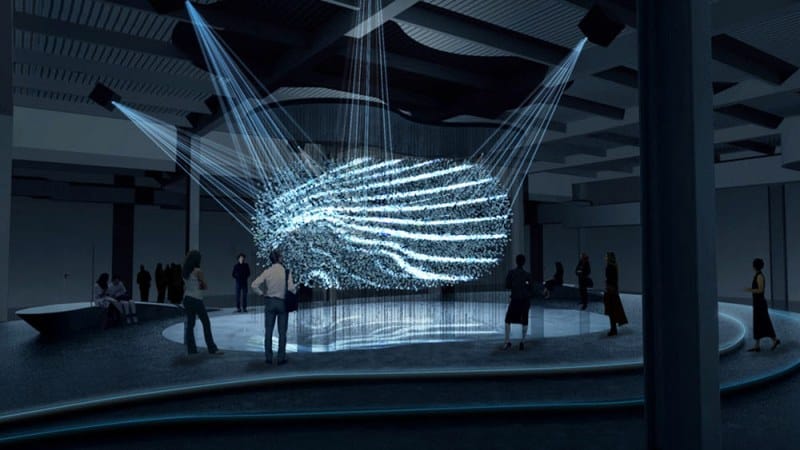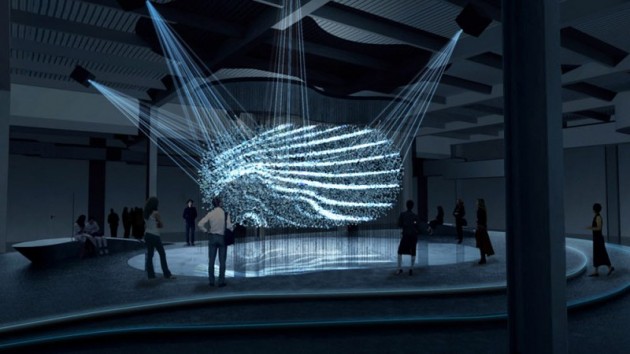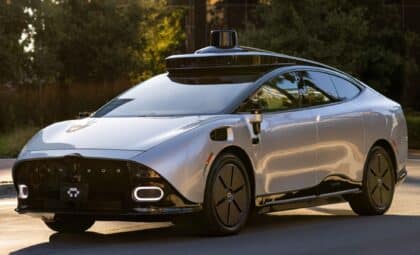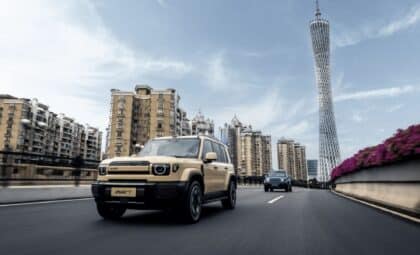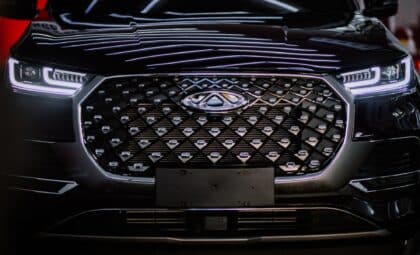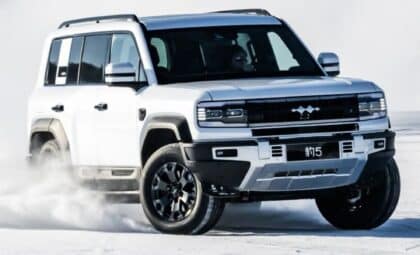Hyundai’s “Sculpture in Motion” at the 2013 Milan Design Week
Hyundai will debut a second version of “Sculpture in Motion,” a kinetic art installation created with Reuben Margolin, at the 2015 Milan Design Week. Inspired by the brand’s Fluidic Sculpture language, the first version was an interactive light display at Milan in 2013.
But what exactly is “Hyundai Fluidic Sculpture” and how does it impact the automaker’s vehicle design? We uncover the philosophy behind the brand’s underlying design platform and how it influences the conception process.
Related: Fluidic Sculpture 2.0 influences the redesigned Hyundai Tucson
The Philosophy Behind Hyundai’s Fluidic Sculpture Design
Originally conceived in 2007 by M.K. Chung and Mr. Oh Suk Geun, Fluidic Scultpure was a much-needed design platform which brought consistency among the brand’s models (which were all designed independently at the time).
Hyundai’s design identity is based on the brand’s philosophy to embrace harmony with nature. It’s based on four tenets: fluid, dynamic, motion made easy, and driving pleasure.
The first part (“Fluidic”) is organic, inspired by nature. “Nature is made of curves, not right angles,” states one of Hyundai’s brochures. “Our designers often cite Antelope Canyon, a spectacular natural feature in Arizona (US), as an inspiration.” Complementing that is “Sculpture,” invoking precise, hand-made craftsmanship. The result is a flowing and dynamic form, both on the inside and outside of the vehicle.
Fluidic Sculpture design first appeared in the 2010 Hyundai Tucson and Sonata models.
Lower Antelope Canyon, an inspiration for Hyundai’s vehicle designs
Photo: Wikimedia via CC
In 2014, Hyundai updated its design language by launching Fluidic Sculpture 2.0. It adapted the original platform to a wider range of vehicles, and is based on three principles: fluid aesthetics, the modern appeal, and a premium interior ambiance.
“The evolution of the design encompasses simplicity, ease of use, comfort, reliability, enhanced safety, high quality, style and will carry Hyundai’s brand image of Modern Premium,” explained Hyundai Designer Casey Hyun in an interview.
The implications of Fluidic Sculpture on the brand’s models can easily be observed in the hexagonal grille and crease running along the flanks. The vehicles have increased aerodynamic levels and a sleeker appearance. The design language is generally considered successful, and one of the reasons vehicle sales have increased over the last half-dozen years.
Related: The Santa Cruz concept design is shocking
News Sources: Motoroids
The News Wheel is a digital auto magazine providing readers with a fresh perspective on the latest car news. We’re located in the heart of America (Dayton, Ohio) and our goal is to deliver an entertaining and informative perspective on what’s trending in the automotive world. See more articles from The News Wheel.

